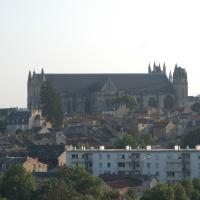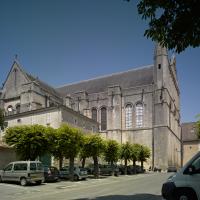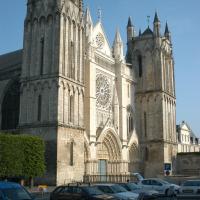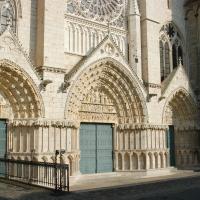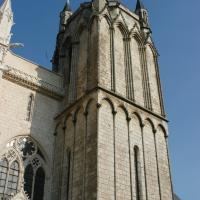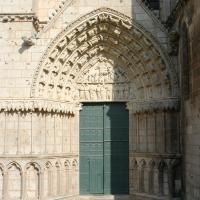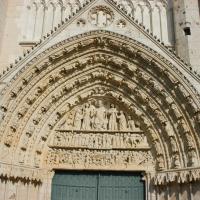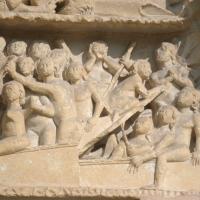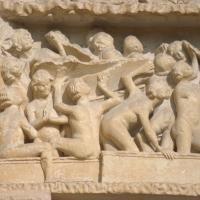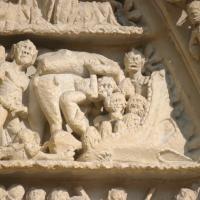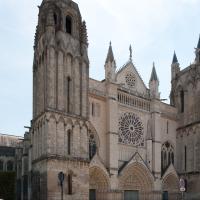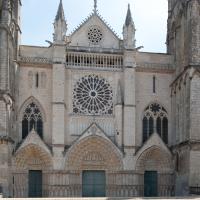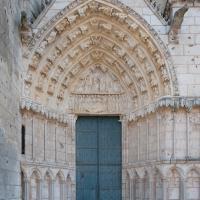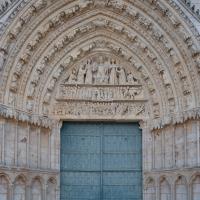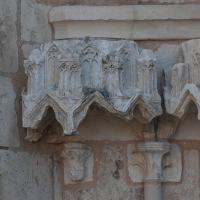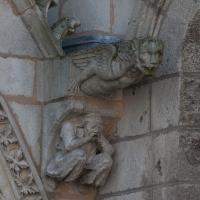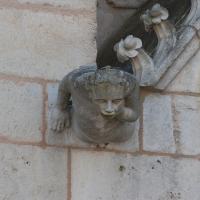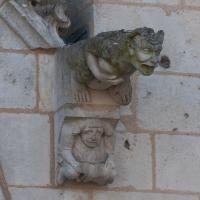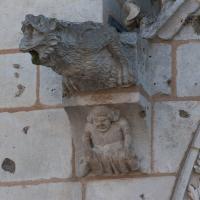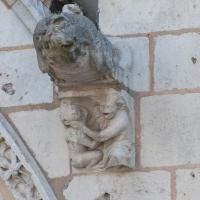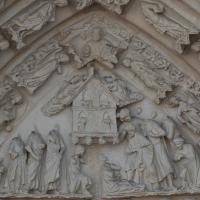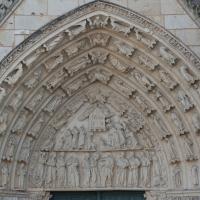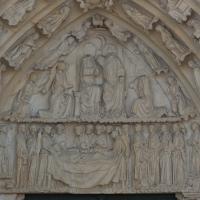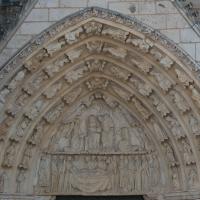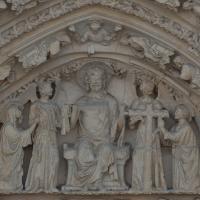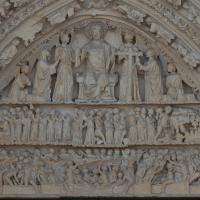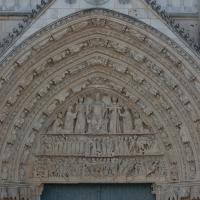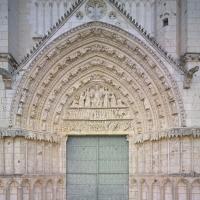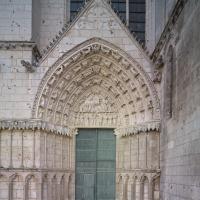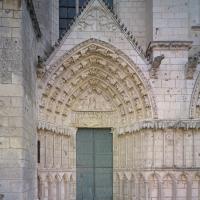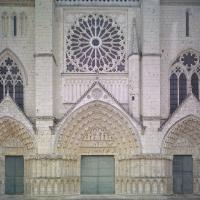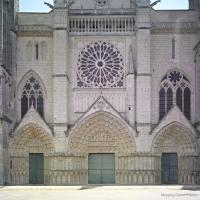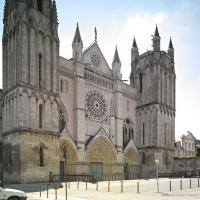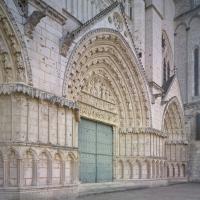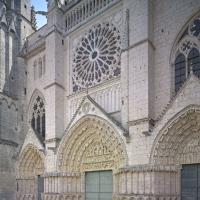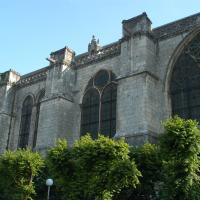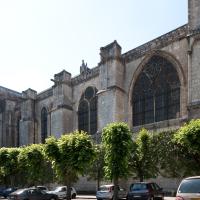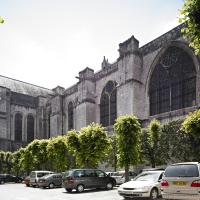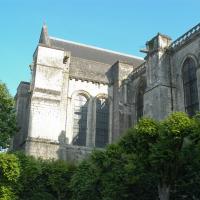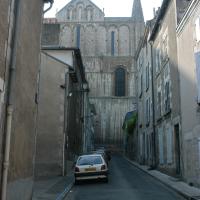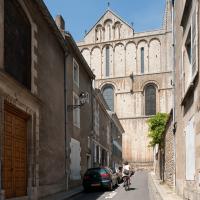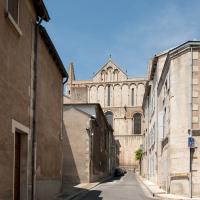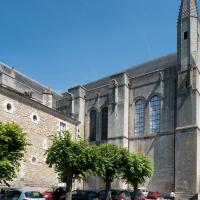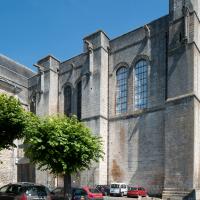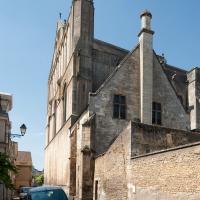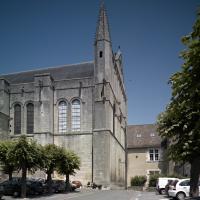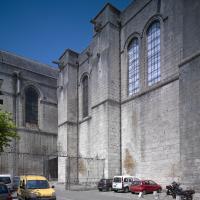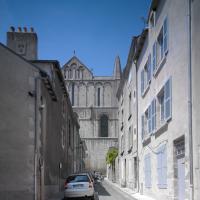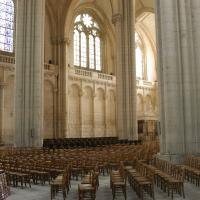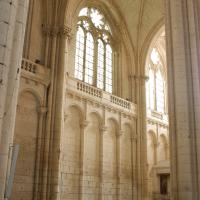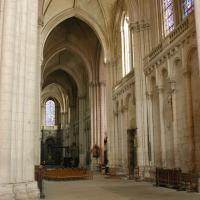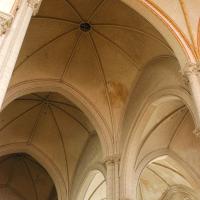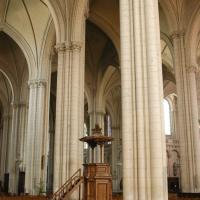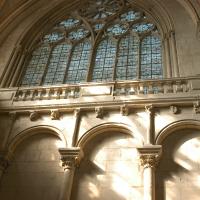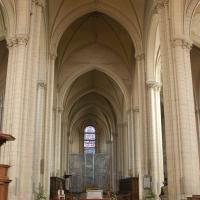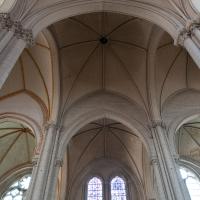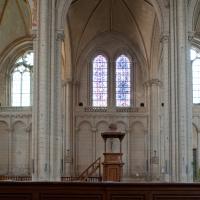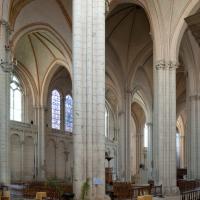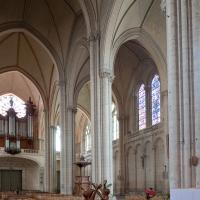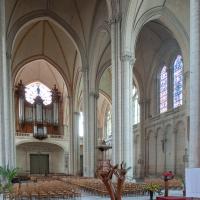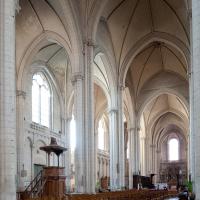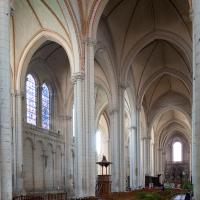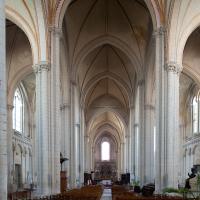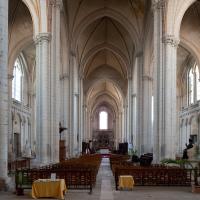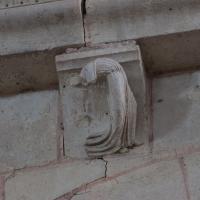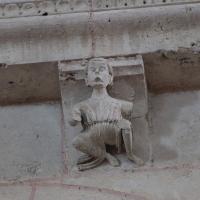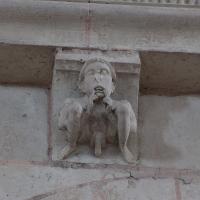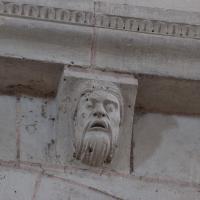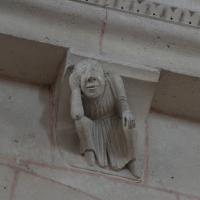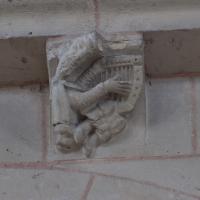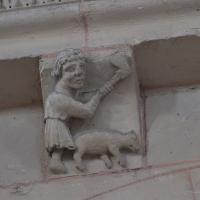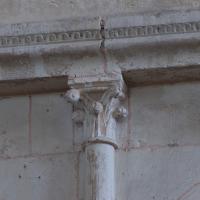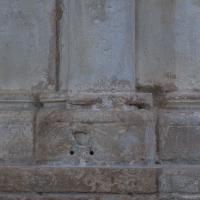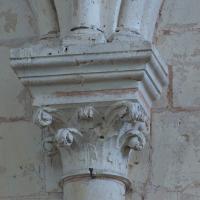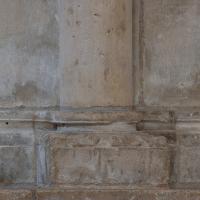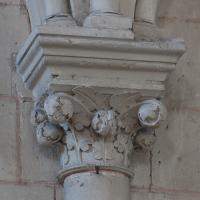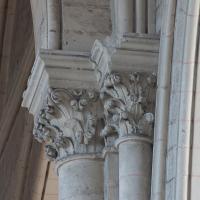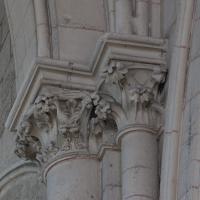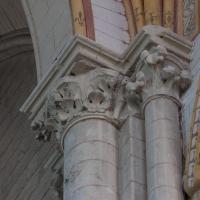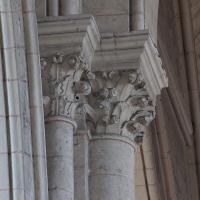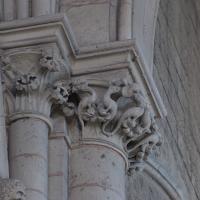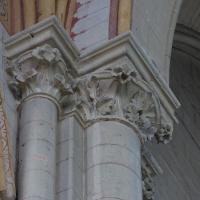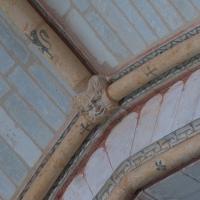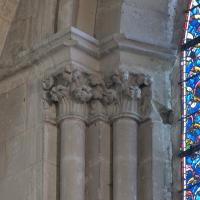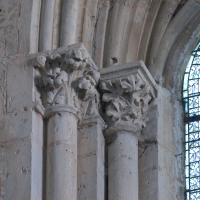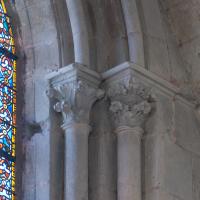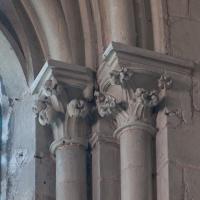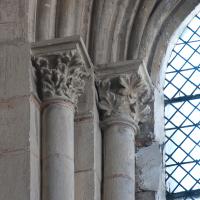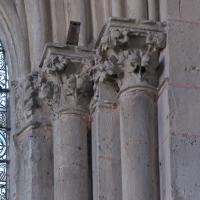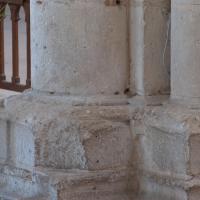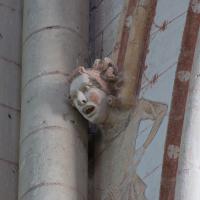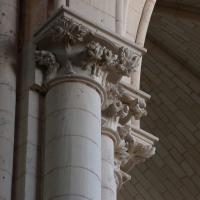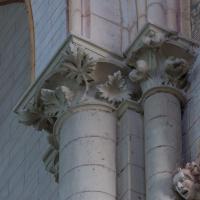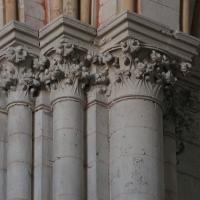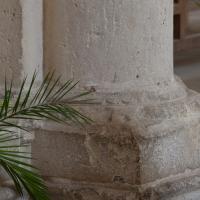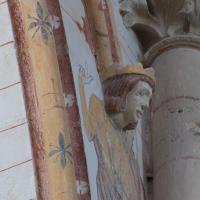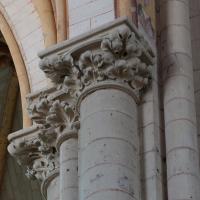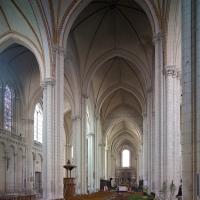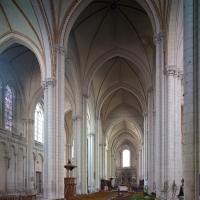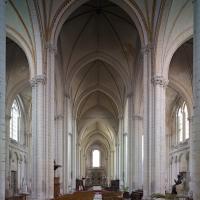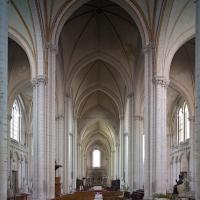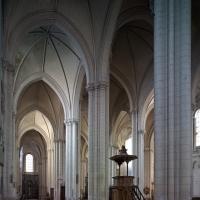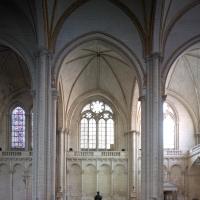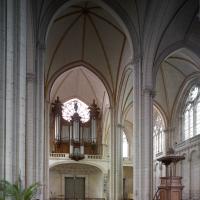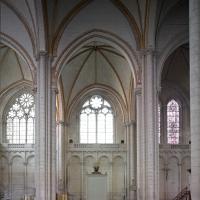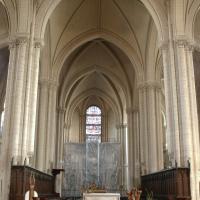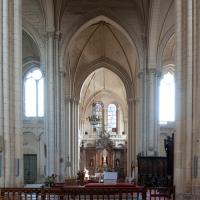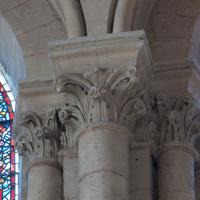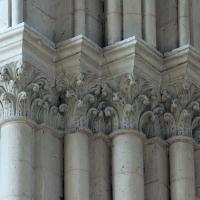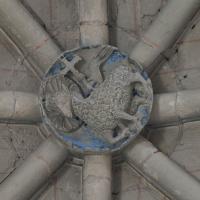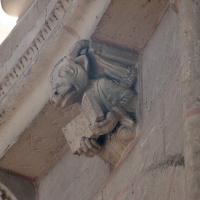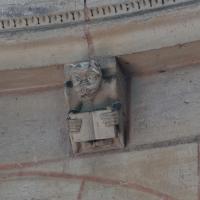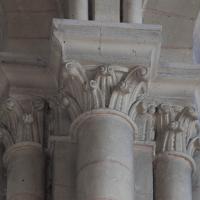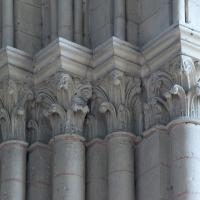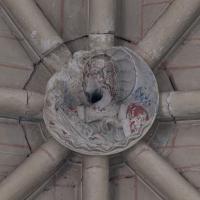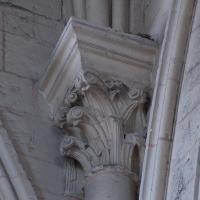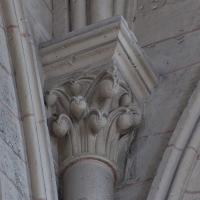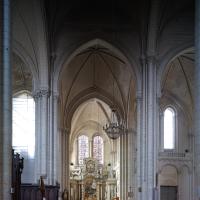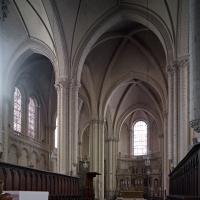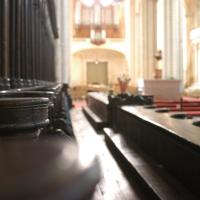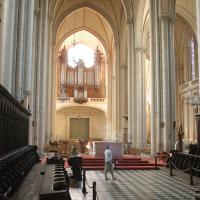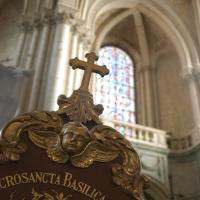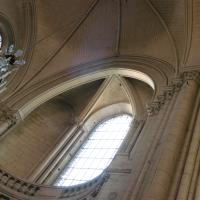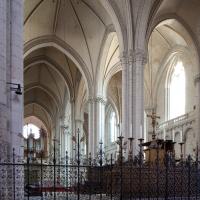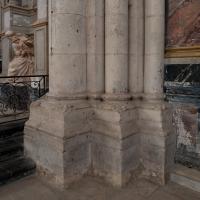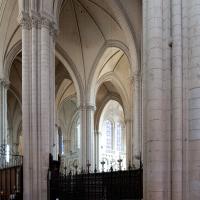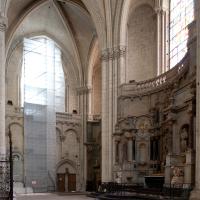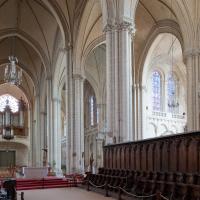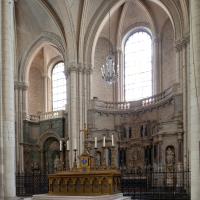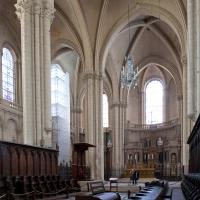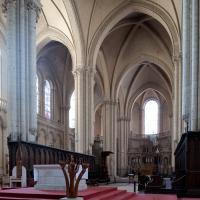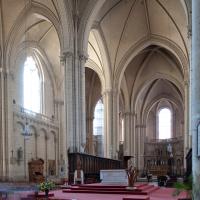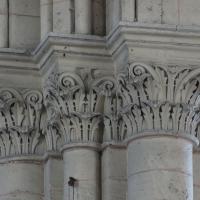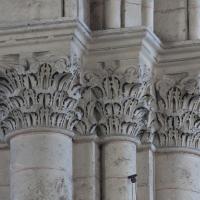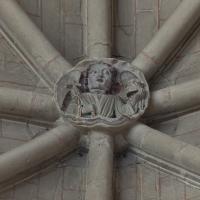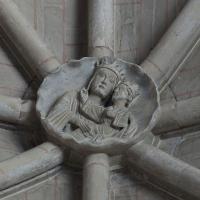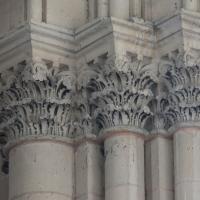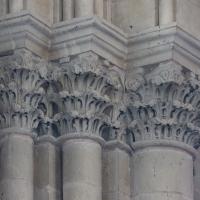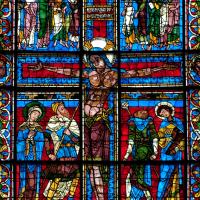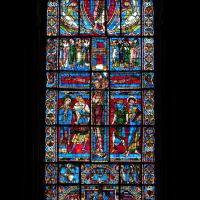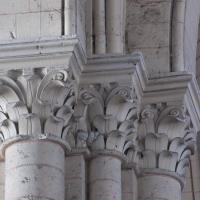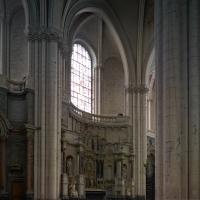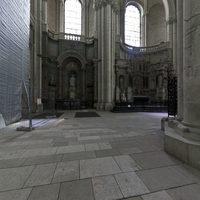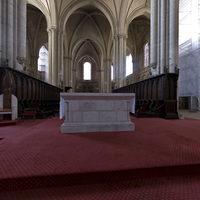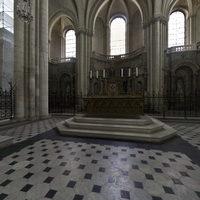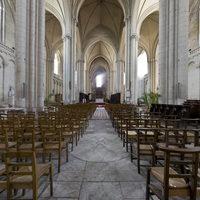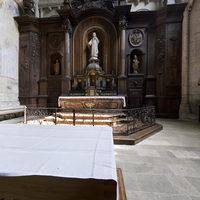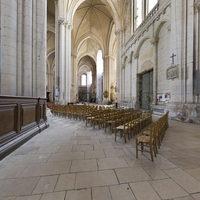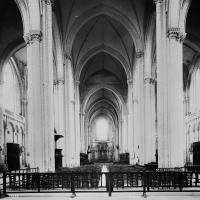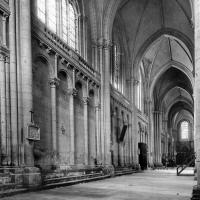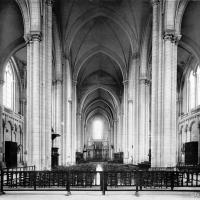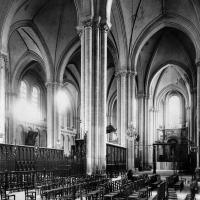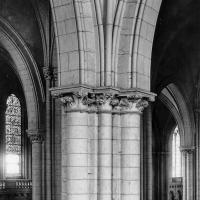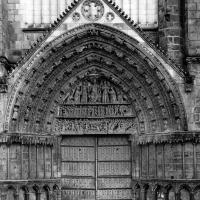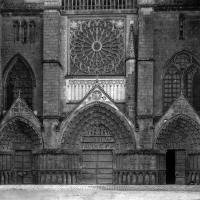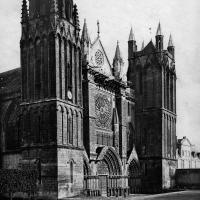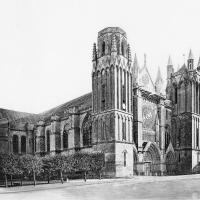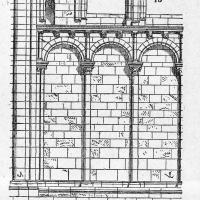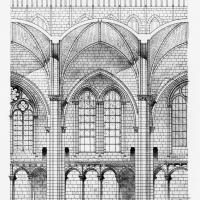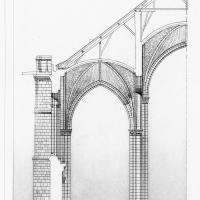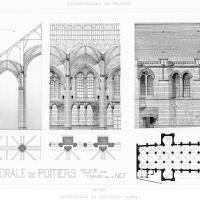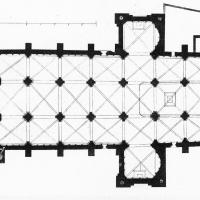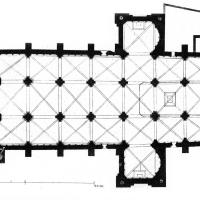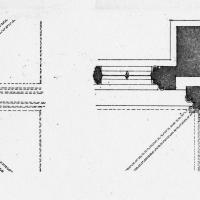Images
VR Tour
Notes
History
The cathedral was built on the site of the ancient episcopal group (including baptistery of S-Jean) at the eastern edge of the Roman city. The earliest known cathedral was Merovingian. Other than the fact that a fire took place in 1018 little is known of the edifice where Eleanor was married in 1137 and 1152, or of the date of the start of work on the Gothic cathedral. Traditionally this is put in the 1160s and associated with the patronage of Eleanor, last sovereign of the duchy. In the 1170s she presided over a brilliant poitevin court.
Date
Begun ca. 1160
Chronology
Work probably began under Bishop Jean Belmain (aux belles mains, consecrated 1162), an Anglo-Norman prelate and associate of Henry II . Construction of two eastern bays of chevet as 3-aisled hall church; six domed-up quadripartite vaults 24.2m high, lit by great windows in outer wall. Second phase of construction, c. 1200, probably begun under Bishop Maurice de Blason, 1198-1214, began in westernmost bay of chevet, brought signficant changes in the structure. Lierne vaults with penetrating ribs 5 meters higher than in the chevet (starting in "crossing" bay. Presence of tympana over arcades Work reached the west end by c. 1230; frontispiece c. 1250 refers to Notre-Dame transept, but the completion of the upper nave and vaults continued to around 1290
Sculptural Program
The theme of the western frontispiece's north portal is the Coronation of the Virgin, a theme with well-known antecedents at Senlis and Notre-Dame of Paris, among others. Among a bevy of angels, the Virgin and Christ share a throne in the tympanum. The iconography of the sole lintel culls details from the apocryphal tales of the Dormition and Assumption of the Virgin.
The central portal of the western frontispiece is devoted to the Last Judgment. Christ is represented displaying the stigmata, his garment slung over one shoulder, revealing a portion of his gaunt torso. The figure of Christ is flanked by two angels carrying instruments of the Passion, the Virgin, and Saint John. Kneeling at either corner of the triangular composition of the tympanum, two angels are depicting in a three-quarter pose, their cheeks full with breath intended for their trumpets, now missing. In the register below, we see two orderly rows of souls: one line is heading toward the angel at the left edge of this register, who extends a crown to the redeemed souls before heaven's gate; the second line is destined for the voracious Hellmouth at the right edge. As we have come to expect, Saint Michael is depicted in the center of this field, presiding over the division of souls; however, unlike some other interpretations of this theme, the Archangel is not shown in the process of weighing souls. In the lower lintel, we see an array of souls opening and emerging from their tombs. In the four archivolts surrounding the central tympanum, 72 voussoirs are populated with Old Testament figures, apostles, martyrs, and saints.
The south portal is a saint's portal dedicated to Saint Thomas. Iconographic considerations of this portal universally dwell on the supposed incongruity of the appearance of a portal dedicated to Saint Thomas here. Although the hagiography of Saint Thomas is admittedly an unusual portal theme, portals dedicated to locally relevant saints are, in fact, quite common. The familiar story of the incredulity of Saint Thomas appears on the lintel, and in the tympanum above we see the saint distributing alms. The tabernacle, which appears as if it is floating in the tympanum, refers to an apocryphal story about the innumerable palaces prepared for the elect. In the surrounding voussoirs, we encounter figurations of the wise and foolish virgins from the eponymous parable, angels, and saints, some of them in knightly garb.
Double tiered arcade of socle zone, first seen in the Coronation portal of Notre-Dame of Paris, is expanded here, as at Bourges.
Williamson has drawn stylistic comparisons between the western frontispiece sculpture at Poitiers and the mid-thirteenth-century sculpture at Paris and Amiens, as well as to that at Charroux, leading the scholar to wonder whether the same imagiers were responsible for the Poitevin composition.
The triple portal of the western frontispiece dates to the 1250s.
Location
Bibliography
Arès, J.; Canseliet, E.; Carny, L.; La Cathédrale Saint-Pierre de Poitiers et l'hermétisme, Vincennes, 1984
Auber, C., Histoire de la cathédrale de Poitiers, Poitiers, 1849?
Barbier de Montault, X.-M.-J., Le symbolisme architectural de la cathédrale de Poitiers, Ligugé, 1898
----, Le vitrail de la crucifixion à la cathédrale de Poitiers, Paris, 1885
----, Le vitrail de Saint-Laurent à la cathédrale de Poitiers, Poitiers, s.d
Blomme, Y., Poitiers: la cathédrale de Saint-Pierre, Paris, 2001
----, La Construction de la cathédrale Saint-Pierre de Poitiers, Paris, 1994
Boinet, A., Les stalles de la cathédrale de Poitiers, Caen, 1914
Brisset, F., "Étude compare des modillons des galeries de circulation de l'église Sainte-Radegonde et de la cathédrale Saint-Pierre de Poitiers", Bulletin de la Société des antiquaires de l'ouest et des Musées de Poitiers, vol. 14:3, 1979, pp 483-511
Carny, L., "La cathédrale Saint-Pierre de Poitiers", Atlantis, vol. 57:332, 1984, pp 269-288
Crozet, R., "Recherches sur la cathédrale et les évêques de Poitiers des origines au commencement du XIIIe siècle," Bull de la Soc des Ant de l'Ouest, 4 série VI, 1962 p361?
-----, Survivance de romanes à la Cathédrale Saint-Pierre de Poitiers, Poitiers, 1955
Forget, P., Cathédrale de Poitiers: sixième centenaire, Poitiers, 1979
La Cathédrale de Poitiers, Cognac, 2006
La Croix, C. de, Mélanges archéologique du R.P. de la Croix s.j. Saint-Sixte et les cathédrales de Poitiers. Étude archéologique, accompagnée de six planches, Poitiers, 1907
Levillain, L., Note sur l'ancien reliquaire en plomb trouvé dans la chapelle Saint-Sixte à la cathédrale de Poitiers, Poitiers, 1906
Lozinski, J. S., The cathedral of St. Pierre, Poitiers. III, The construction, phases, and chronology: an architectural history through the first building campaign, s.i, 1960
Maillard, E., Les sculptures de la façade occidentale de la cathédrale de Poitiers, Paris, 1970
Mussat, A., Le style gothique dans l'ouest de la France, Paris, 1963, pp243-263
Piccinini, C., Les portails occidentaux de la cathédrale de Poitiers: réflexions sur l'ouvrage, s.l., 2003
Pilot, B., "Les effigies de dignitaries ecclésiastiques et royaux dans le décor intérieur de la cathédrale Saint-Pierre de Poitiers", Cahiers de civilization medieval, Xe-XIIe siècles, vol. 53:212, 2010, pp 379-406
Subes-Picot, M.-P., "Découverte de peintures murals dans la cathédrale Saint-Pierre de Poitiers", Bulletin Monumental, vol. 148:2, 1990, pp 200-203
Villard, J.-A., Les Orgues de la cathédrale de Poitiers, Poitiers, 1981


